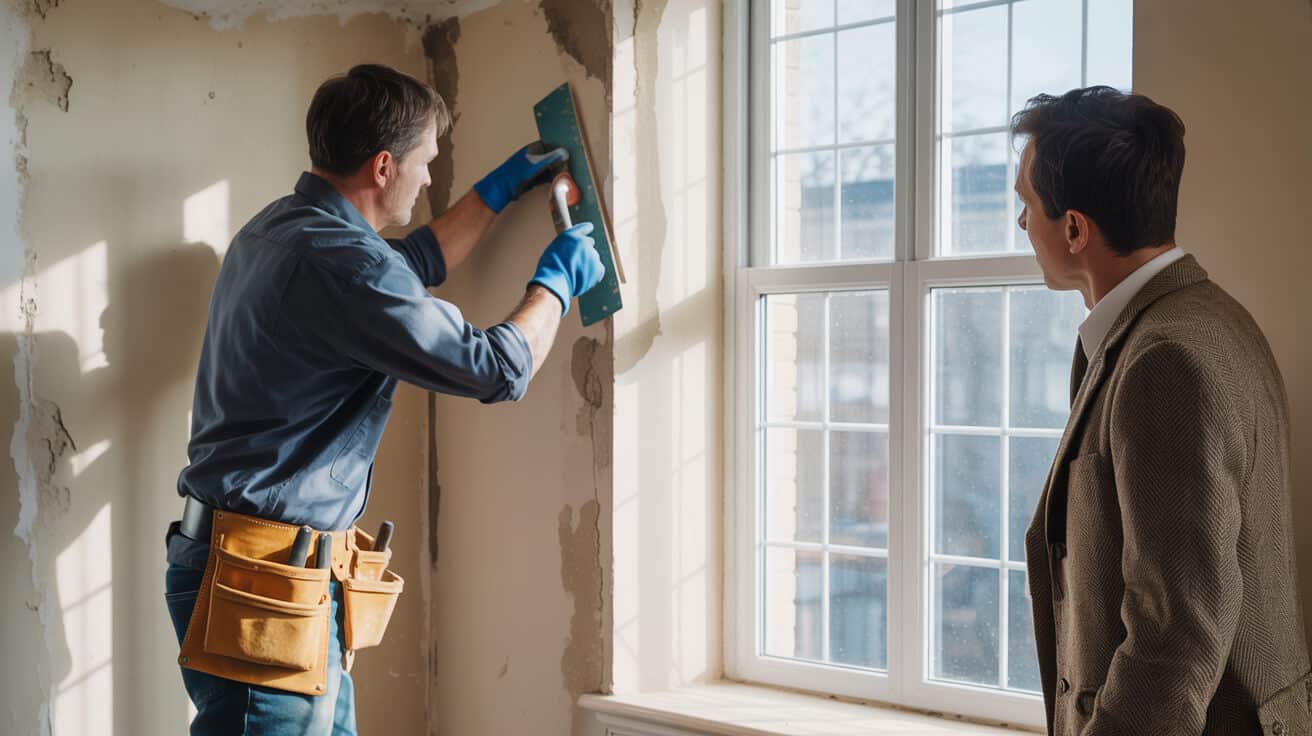 Budgeting For Maintenance How Much Should Landlords Set Aside
Budgeting For Maintenance How Much Should Landlords Set Aside

How Much Should You Budget for Property Maintenance—Why the Right Number Pays Landlords Back in More Than Cash
Every profitable landlord has a system for maintenance. The best treat it as a non-negotiable investment that shields more than just bricks and mortar—it’s the foundation under your compliance, tenant loyalty, and long-term earnings. Those who “wing it” face the same predictable fate: neglected fixes turning into blown-out budgets, regulatory mistakes, unhappy tenants, and nine times out of ten, a hit to property value nobody saw coming.
Maintenance spending is never wasted—what you invest in prevention almost always beats what you lose to disaster.
You’re about to learn how high-performing landlords set a maintenance budget that’s realistic, stress-resilient, and proven on the ground. We’ll map the legal must-haves, debunk popular shortcuts, reality-check common “rules,” and show you how pros (and their contractors) plan for the unknown, not just the expected. Whether you manage a single buy-to-let or a mixed portfolio, this is how you move from reactive firefighting to controlled, cost-saving confidence.
What Are Your Legal Responsibilities—and What Happens If You Lowball Your Budget?

Safe, well-maintained homes aren’t a bonus for UK landlords—they are a legal requirement. Section 11 of the Landlord & Tenant Act 1985 gives you the non-negotiable job of keeping structure, water, gas, electricity, sanitation, and heating in good repair—no “ifs” or “when the numbers work out” excuses (Landlord & Tenant Act 1985, gov.uk).
Miss your obligations and the risks are real:
- Fines can soar into five figures for safety failures or licencing breaches.
- Local authorities may do emergency works and bill you—in full.
- Insurance claims will almost certainly be rejected for non-compliance.
- Tenants can legally withhold rent if you lag on required repairs.
- Persistent failure takes you off local licencing registers, slashing future rental income.
A missed certificate or late fix isn’t an oversight—it’s an open invitation for penalties, lost rent, and a reputation that’s tough to fix.
Proactive Safeguards That Work
- Digitise every certificate: —keep them in cloud storage with clear expiry reminders.
- Set calendar alerts: for each legal check: gas safety, EICR (every 5 years), smoke/CO alarms, fire door checks.
- Log tenant repairs with before/after photos and timelines: (easy to do with a smartphone and free apps).
Landlords who get audited and panic aren’t unlucky—they’re unprepared. The right system stops maintenance from being a gamble you hope to win.
How Much Do Landlords Actually Spend on Maintenance Each Year in the UK?

You’ve definitely seen advice like “budget £1,000” or “plan for 1% of value.” But do those numbers reflect real-world costs?
- Average annual spend is £1,374 per property: , based on [Towergate Insurance](https://www.towergateinsurance.co.uk/landlords-insurance/the-cost-of-being-a-UK-landlord). Older flats or houses in London routinely cross £1,600 a year ([Bluestone Properties](https://www.bluestoneproperties.co.uk/news/how-to-budget-for-rental-property-repairs-a-practical-guide-for-landlords-in-london)). Costs have surged by 26% over the past two years—material price hikes, more legal checks, and labour pain across the board.
Typical yearly maintenance includes:
- Gas & boiler checks: £60–£120
- EICR (annualised): £40–£60
- Fire alarm & lighting tests: £50–£120
- Routine repairs: £800–£1,000
- Emergencies or “that big one you didn’t see coming”: +£500 or more if reactive
Deferred repairs rarely vanish—they come back as outages, complaints, new damage, and management headaches.
How to Stay on Top of the Real Number
- Track each property’s spend, never just portfolio averages.:
- Adjust for variables: older properties, listed buildings, or anything “quirky” need more.
- Tap into landlord networks: for benchmark comparisons and crowd-sourced solutions.
If your running total is always “almost enough,” your budgeting method—not just the market—is holding you back.
Which Maintenance Budgeting Methods Actually Help Landlords Stay Ahead?

Seasoned landlords move beyond hopeful guesses and use at least one proven formula. The three UK “standards” are:
The 1% Rule
Set aside 1% of your property’s current market value each year. If your rental is valued at £250,000, £2,500 goes to repairs and upkeep. Simple to apply, but not always accurate for high-spec or renovator properties.
The £1 per Square Foot Rule
Budget £1 for every square foot (or £10 per sq. metre) annually. For a 750 sq. ft flat, that’s £750 a year. Great for bigger homes with more moving parts, less useful for tiny studios with recent upgrades.
Percentage of Gross Rent
The 30–50% rule: Set aside 30–50% of your annual gross rental income. This pools repairs, agent fees, compliance costs, and voids into a single “running costs” basket. If your rent is £12,000 a year, your annual maintenance and running budget is £3,600–£6,000 (PMA-DC).
The strongest method is the one you test against true history—compare theoretical with last year’s spend, then adjust.
“Combo” Budgeting for Real-World Properties
- Use a blend for properties with unique layouts, period features, or unpredictable tenant wear.
- Raise buffers if local trades are expensive or for houses with original insulation, plumbing or windows.
- Revisit your reserve yearly—if prices jump, your plan evolves.
Nobody goes wrong over-saving. Most go wrong because they didn’t see which expense would appear next.
What Variables Drive Your Maintenance Costs Higher—Even When You Budget Carefully?

Budgeting isn’t a perfect shield. The following “hidden drivers” are what quietly bust even solid plans:
Age and Condition
Properties over 25–30 years old generally cost 25–50% more per year to maintain. A cracked drain, original windows, or an ageing flat roof each up the odds.
Location
London and the South East? Add 10–20% to all callouts and repair jobs. More rural or hard-to-reach locations can mean limited trade availability and travel surcharges.
Regulatory Creep and Price Inflation
Over the last year alone, routine maintenance bills jumped 7–12% (ONS, 2024), driven by increased material costs and ever-tightening compliance demands (shorter fire door and electrical check intervals, new requirements for HMO/PRS).
Move from surprise to control by:
- Tracking monthly repair and maintenance spend on each property
- Adding 5–10% inflation buffer every year
- Using cloud-based records to catch clusters or patterns (e.g., recurring leaks or wall cracks)
Most budgets break from missing data, not bad luck. If you’re not recording, you’re only ever reacting.
Do Small Maintenance Delays Really Cost Landlords Big?

In nearly every major repair callout, the storey starts with “it was just a minor thing a few months ago.” Over 60% of big jobs begin as small issues ignored for weeks or months.
- Damp and mould: claims can lead to repair bills and fines up to £30,000 per breach ([gov.uk](https://www.gov.uk/government/publications/hhsrs-operating-guidance-housing-act-2004-guidance-about-inspections-and-assessment-of-hazards-given-under-section-9)).
- Delayed boiler servicing means more winter breakdowns, grumpy tenants, and insurance claims that drag out.
- Loose sockets, slow drips, blown bulbs—what’s cheap today haunts you tomorrow in claims, council fines, and bad reviews.
Skipping small jobs pumps risk into your system and drains trust far faster than you imagine.
How Savvy Landlords Stay Ahead
- Quarterly property checks: —self-inspect or use a maintenance pro.
- Photo logs: for every fix (pre/post) so you build an audit trail.
- Review recurring repair patterns: —that “repeat” leak usually signals a missed root cause, not chance.
Protecting your profit starts with discipline—fixing the cheap things, fast.
Can Digital Tools and Pro-Techs Save You Time, Money, and Stress?

Landlords who embrace a mix of technology and hands-on pros get three benefits: transparency, reliability, and less emotional guesswork.
Tech That Pays Its Way
- Set repeat calendar reminders for compliance and contractor checks (gas, EICR, smoke/CO alarms).
- Store all key paperwork—certificates, receipts, quotes—in cloud apps found in most free property management platforms.
- Keep photo logs with date stamps, so if ever challenged (by an insurer, council, or tenant), you’re ready to prove compliance in two minutes, not ten days.
Why Professional Maintenance Partners Change the Game
- One partner for all trades means one call, less admin, and more consistent fixes (All Services 4U: plumbing, electrics, joinery, heating—all covered).
- Proactive routine checks catch problems you’d miss and help spot trends before they grow costly.
- Upfront, itemised pricing removes the “panic when the bill lands” effect and helps you plan surplus reserves for tough years.
The right digital and human set-up turns maintenance from a headache into a system you only look at when you really need to.
What’s Really at Risk When You Skimp on Maintenance Budgets?

Short-term “savings” can claw back thousands in lost rent, fines, and permanent damage to your asset’s value and reputation.
- Incomplete repairs mean longer void periods as properties can’t legally be let or need last-minute, expensive jobs.
- Delays drive away your best tenants—word spreads fast, and online reviews stick.
- Penalties for safety breaches now top £30,000 per infraction in many councils, and can also restrict your ability to let in the future ([Bluestone Properties](https://www.bluestoneproperties.co.uk/news/how-to-budget-for-rental-property-repairs-a-practical-guide-for-landlords-in-london)).
- Insurers seek every angle to reject claims if maintenance records or receipts are vague.
- The slowest damage? Sinking property value from patchy fixes and a “problem landlord” tag on licence or online.
Neglect looks cheap upfront. But hidden costs bite deeper—tenancy loss, fines, and thousands wiped off what you’ve built.
If you had to fix the roof in January, would your emergency fund cover it? If you lost heating, would you put it right without cutting corners or waiting for next month’s rent? If not, your business is running on hope—never a safe plan.
Why All Services 4U Turns Maintenance from a Chore into a Strategic Asset
Most landlords can spot a fault; few can build a system that logs, fixes, and protects their whole portfolio without constant worry. That’s where All Services 4U changes the game:
- Bespoke budgeting,: not random estimates—aligned to your property’s age, type, and location.
- All-trade coordination,: so plumbing, electrics, heating, and joinery are managed with one accountable partner—not five.
- Live digital compliance,: with certificates and receipts always available when you need them, not buried in dusty folders.
- Clear, up-front quotes: —see exactly what you pay for, every time.
- Trusted, DBS-cleared professionals: —so your property, tenants, and insurance are always covered.
That’s the difference between reacting to breakdowns and building real resilience—costs controlled, compliance closing every loophole, and stress moved to the “never again” column.
Start Owning Your Property Budget and Performance—All Services 4U
If you’re tired of surprise costs, panic repairs, or missing compliance checks, you need the backup only a professional team brings. All Services 4U helps landlords control costs and asset health from day one—transforming routine fixes into profitable safeguards for years to come. Don’t settle for “what went wrong”—secure your asset, reputation, and peace of mind with a plan that delivers, not just defends.
Ready to take control of your property’s future? Book a no-pressure call with All Services 4U and turn maintenance into your strongest asset.
Frequently Asked Questions
Who is responsible for setting UK rental property repair budgets, and what proves your spending is enough?
No one in the UK rental sector hands you a fixed price tag for property upkeep—but every authority expects tangible evidence that your approach is reasonable, methodical, and aligned with both local standards and risk. Local councils, HMRC, insurers, and lenders each scrutinise how you maintain your property, not just how much you spend. Your real “budget” is defined by compliance logs: dated invoices, servicing certifications, council checks, and photographic proofs that repairs are timely and recurring, not left to chance.
“Compliance isn’t about how much you say you spend—it’s about whether your evidence convinces an inspector, auditor, or claims handler when it counts.”
Guides from ARLA, Checkatrade, and trade insurers recommend benchmarks like 1% of market value, £1 per square foot, or 30–50% of gross annual rent. These aren’t “rules,” but they set the bar for defending your plan if questioned by authorities. Ultimately, enforcement bodies look beyond formulas to judge if you’re actually preventing issues—especially when financial shortfalls, tenant complaints, or failed audits arise.
What kinds of proof or process do authorities accept?
- Line-by-line logs of annual and cyclical work (statutory, cosmetic, emergency repairs)
- Photographs and digital timestamps for completed jobs and certification
- Backed-up test and inspection certificates (EICR, gas safety, fire doors)
- Digital receipts or app-based evidence for claims and insurance
- Evidence of planned reserve amounts and reforecasting after major incidents
Your best defence isn’t the size of the budget, but its resilience: if you can adjust, document, and prove that maintenance moves with real-world risks, every regulator and underwriter will take you more seriously. You protect not only your rental licence—but also your time, margins, and peace of mind.
Which budgeting approach delivers reliable maintenance reserves across varied UK assets?
A blended approach—grounded in asset value, local conditions, and scenario testing—is now best practice. The longstanding 1% rule (£3,500 per year for a £350,000 home) remains a robust default, but smart landlords validate and upgrade using:
- Square Footage Back-up: Set aside £1/sq ft each year if your property footprint is unusually large, has bespoke features, or fluctuates in occupancy.
- Rental Percentage Model: For high-turnover assets (HMOs, student lets), allocate 30–50% of annual rent for direct maintenance. This insulates against periods of rapid wear or tenant churn.
- Invoice-led Reality Check: Review the last two years of real invoices—do they outstrip your calculation? Use the higher figure to avoid shortfalls.
- Scenario Simulations: If a major system fails (roof, boiler), could your reserve cope? If not, open a secondary buffer pot.
- Inflation Buffer: Lift your calculation by 5–12% annually to match rising trade and material costs.
“Your property never fails on schedule—reserves are only ‘right’ if they’re ready for the year nothing else goes to plan.”
Further, integrated tech tools (see below) double-check that cyclical peaks—like winter heating failures or stormy roof leaks—don’t leave you exposed. Councils and insurers increasingly expect this blend of forward-planning and evidence-driven review as standard before claims, audits, or licencing renewals.
How often should you revisit your budgeting method?
- Annually, at minimum, with each autumn or end-of-lease cycle
- Immediately after major repairs, emergencies, or changes to occupancy type
- When new compliance standards or inflation shifts arise
- Before refinancing or changing insurance providers
The right maintenance reserve isn’t static; it moves with your property’s risk, lifespan, and regulation. The more adaptive the strategy, the fewer surprises—and the greater your long-term financial stability.
What does under-funding repairs actually risk in today’s UK rental sector?
Seemingly minor savings on repair budgets often trigger major, compound consequences—ones increasingly difficult to reverse once they escalate. Cutting corners, even “for one year,” can turn hidden risks into high-velocity problems such as:
- Authority Fines and Rent Repayment Orders: Local councils now issue fines up to £30,000 for missed repairs or failed safety checks; repeat failure leads to forced rent refunds or licence bans, hitting income directly.
- Insurance Refusals: Most UK insurers and lenders refuse claims for flood, fire, or damage if you can’t show up-to-date maintenance logs or statutory certificates.
- Asset Value Drops: Postponed repairs (like a dormant leak or slow mould growth) can turn an affordable fix into a five-figure remediation bill, eroding capital and resale value.
- Tenant Loss and Reputation Harm: Renters increasingly flag slow repairs in public reviews and social forums. Persistent neglect moves your property—and your name—onto local “watchlists,” fostering high vacancy and low-quality tenancy cycles.
- Disqualification from Managing or Letting: Chronic underfunding flags you as “unfit to let” in council eyes, potentially leading to red-listing or enforced property management takeovers.
“The true cost of a skipped repair is rarely visible until it costs you a year’s profit or a clean safety record.”
Every delay in funding or approving urgent works now multiplies your legal, financial, and reputational risk. Modern systems—whether digital logs or partnered providers—prove you acted ahead of the curve, so authorities see a prevention mindset, not neglect.
Where do these risks hit fastest?
- Older assets with legacy repair backlogs
- HMOs or larger portfolios managed without technology
- Regions or years with sudden weather spikes (plus inflation or trade scarcity)
- Shifts in regulation, like new EPC or electrical safety standards
Ignoring maintenance in today’s market isn’t just a financial gamble—it’s a risk to your entire role as a hands-on, compliant property investor.
How do property age, asset type, or tenant mix change your maintenance reserve strategy?
One-size-fits-all repair budgets fail fast when property features, vintage, or occupants shift. Ageing, specialist, or intensively-used properties almost always require larger reserves and tougher scrutiny. Examples include:
- Heritage and Older Buildings: Expect 1.5–2% of value per year minimum, due to unpredictable plumbing, historic electrical quirks, and fragile roofing. Added cost comes from both workmanship complexity and compliance certificates.
- Architectural One-Offs or Extensions: Unique features (e.g., original sash windows, bespoke joinery, or converted lofts) almost double repair pricing and frequency.
- High-churn Lets (HMOs, Students, Airbnb): High turnover means more “reset costs”—cleaning, locks, repairs, and system reboots add up, with cleaning and replacement frequency outpacing “average” lets by 20–40%.
- Regional Labour Scarcities: City regions, particularly in the South East, command higher labour rates and material markups—while rural areas might battle with delayed response times and part availability.
Tenancy type has direct impact: stable households trigger fewer fix cycles than serviced lets, while specialist student or tourist units may damage or overuse systems at a far higher rate.
“A budget that survives one year won’t always survive new tenants, a refit, or a cold snap. Audit before—not after—the risk.”
When should you upgrade your maintenance targets?
- After any refurbishment, layout expansion, or structural alteration
- Switching to high-density, multi-occupancy, or serviced models
- When you notice climbing annual invoices or repeat complaints in a certain category
- If local regulation or review cycles change (e.g., new mandatory inspections)
Treat each audit, complaint, or change of use as both a budgeting trigger and an opportunity to insulate your portfolio—a tight feedback loop between risk and reserve is now the hallmark of responsible management.
Which repairs and property maintenance costs can UK landlords claim against tax—and where’s the line between “repair” and “improvement”?
UK landlords can claim routine maintenance costs that restore your property to its original, usable state—not upgrades or enhancements. Permitted expenses cover routine patching, painting, and statutory safety works, but exclude capital improvements or “value-adding” alterations. Examples:
- Deductible Immediately:
• Repainting or redecorating as part of tenant turnover
• Plaster, door, window, and roof repairs
• Replacing failed taps, appliances (like-for-like), or heating controls
• Compliance checks (gas, electrics, fire alarm servicing)
• Drain clearance, garden upkeep tied to tenancy handovers
- Not Immediately Deductible:
• Major extensions (new bathrooms, kitchens, or converted garages)
• Upgrading to high-end fixtures (smart systems, triple glazing)
• Efficiency improvements beyond the original installed spec
• Any refurbishment aiming for greater capacity or usability
“HMRC increasingly demands timestamped, photo-supported digital records—auditors expect a box of receipts and a logbook ready to go.”
Best practice is to itemise every invoice, attach photographs before and after, and note exactly which portion is an “improvement”—mixed or ambiguous invoices are now a primary cause of claim challenge or rejection. Use landlord or property management apps with secure logs, and audit portfolios quarterly to stay ahead of HMRC’s digital-first review process.
How can you reinforce your position during audits?
- Upload receipts and evidence the day of works, tagging by property, system, and urgency.
- Separate “repairs” and “enhancements” in job scopes and invoices—prevents partial deduction blowback.
- Use digital logs (including from trusted partners like All Services 4U) to support all expenditure claims, especially for larger or multi-site portfolios.
- Circulate guidance memos to team/family/agents about new rules or case examples—compliance is a team mindset, not a solo effort.
Efficient separation of repair and improvement costs ensures you not only maximise deductibles but stand up under ever-tougher real-time audits.
How can digital tools and service partnerships streamline UK portfolio compliance and reduce maintenance pain?
Today’s most resilient property portfolios operate through systematic digital record-keeping and trusted maintenance alliances—not scattered paperwork or multi-trader guesswork. Cloud-based platforms, mobile reporting, and all-in-one partners transform compliance from a stressor into a point of leverage.
- Digital Evidence Hubs: Store receipts, certification, and before/after photos for all works. Accepted by HMRC, councils, and lenders at audit or claim.
- Unified Service Model: All Services 4U offers both scheduled and emergency repairs—admin is cut, responsiveness is up, and logs survive staff turnover. Single-vendor portfolios also score higher in renewal and insurance evaluation.
- Scenario Stress Tests: Regular mock drills prove whether budgets, certificates, and supplier relationships are robust enough to handle real-world failures.
- Portfolio Tracking Dashboards: Visualise rolling spend, compliance status, and repair frequency per asset—flag anomalies and adapt before problems compound.
“Shortcuts in record-keeping and vendor juggling rarely save money. Professional, systemised routines—driven by tech and skilled partners—pay perpetual returns.”
Landlords who export records securely, instil digital reporting for both contractors and tenants, and run joint annual reviews with their main trade partner are best placed for seamless insurance, financing, and scaling.
What steps ensure compliance and budgeting stay frictionless?
- Tag every invoice, job, and certificate by both address and repair type (roof, heating, drainage)
- Schedule quarterly, portfolio-spanning audits to catch repeated cost spikes and prevent compliance blind spots
- Use integrated tenant request portals—issue reporting and triage speeds skyrocket
- Prioritise pre-renewal “health checks”—prepares assets for regulatory and seasonal changes before last-minute shocks
Structured, digitally-transparent partnerships don’t just comply with new UK rules—they reduce admin, lower costs, and strengthen your reputation with every logged job.
Which fresh tech and process strategies are now essential for forward-looking landlords managing multiple properties?
The UK’s best landlords now trust a “manage-by-dashboard” model—blending predictive tech, digital logs, and one-stop service partnerships. Moving from paperwork and ad hoc bookings to automation and systemisation provides year-round advantage:
- Smart Portfolio Apps (e.g., Fixflo, Arthur Online): Automate reminders, document every repair, and surface recurring issues before they snowball
- Digital Receipt Systems: Snap, upload, and store every cost, with date and job context for instant compliance checks
- Simulated Scenarios: Regular digital “stress tests” challenge your funding and response plans—helping size your emergency reserves properly
- Single Point of Contact Operators: Partners like All Services 4U allow you to authorise, evidence, and quality-check every major task across your portfolio
- Tenant Self-Service Portals: Channels where renters log issues directly, cutting miscommunication and response lag
“The more you automate, the more you future-proof—today’s compliance can’t hinge on memory or paper receipts.”
Subscribe to statutory update feeds (ARLA, NRLA), align your logs and reviews to at least ONS-level granularity, and engage providers who supply end-to-end certification post-repair. The result? Fewer late surprises, better insurance and lending outcomes, and—measurably—higher tenant and regulator confidence.
How can you future-proof your operation as rules and tenant demands keep shifting?
- Run annual, line-by-line audits against up-to-date UK safety and compliance standards, using both provider reports and public data
- Choose partners who include records and post-work digital certification by default—and don’t settle for less
- Treat mandatory upgrades (alarms, EICRs, EPCs) as reputation-builders—not just compliance: documented quality makes your assets more attractive to lenders, buyers, and top-tier tenants
Landlords operating “as the rulebook expects”—uniting compliance, resilience, and a digital audit trail—won’t just defend against fines, but will own the advantage in a market measured more by effectiveness than effort.



